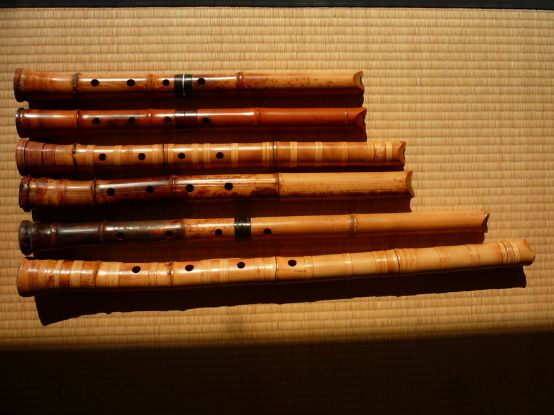Shakuhachi - the bamboo flute from Japan
More than thirty years ago, Andreas Gutzwiller was the first to bring the bamboo flute shakuhachi and its tradition from Japan to Europe. The Chikuyusha.ch association has been promoting this music in Switzerland for eight years.

The roots of the shakuhachi are unknown The instrument originated in China and, according to legend, came to Japan in the 13th or 14th century, where it was initially played by loosely organized mendicant monks. After the turmoil of the civil wars at the end of the 16th century, these monks formed an order that traces its origins back to the Chinese Zen master Fuke and whose emblem became the shakuhachi. Subsequently, however, a unique development took place in that the Fuke monks devoted themselves intensively to the instrument and created a unique form of meditative practice centered around breath and sound. As the breath is of central importance in meditation exercises, playing the shakuhachi serves to direct and control the breath. The music is played in this spirit. This practice resulted in very complex music, but it was considered a "spiritual exercise in tones". This is why it was not played in concerts and outsiders would never have heard the pieces ("honkyoku" - the "actual music"). What was thus created in isolation from society was a very peculiar music, which was based on Japanese scales, rhythms and forms, but which seemed strangely transformed and taken to extremes: a music that was committed only to the breath and the rich tonal possibilities of the instrument and which had no regard for the tastes of an audience that did not exist anyway - in other words, a truly absolute music.
The differences between the countries of Asia and the West are emphasized time and again, and of course they also manifest themselves in the music. But as different as the conditions under which music is created may be, and as different and strange as the compositions may turn out to be - honkyoku can stand for themselves, and it can only be an enrichment for any musician who is serious about his profession to leave the beaten track and venture into new territory. When he looks back, his view will be new and fresh.
More than thirty years ago, Andreas Gutzwiller was the first to bring the tradition of the bamboo flute shakuhachi from Japan to Europe and began teaching at the Institute for Non-European Music at the Basel Academy of Music. It is thanks to his initiative that five of his students in Basel, Zurich and Lucerne are now continuing this work. Eight years ago, the association Chikuyusha.ch Shakuhachi Society Switzerland (www.chikuyusha.ch) was founded to bring together the various traditions of playing this instrument (Geneva has been added as a teaching location), to stimulate contacts between players and to offer courses that complement the instrumental lessons and promote interaction with the stringed instruments shamisen and koto. This offers a concrete opportunity not only to read about Japanese music and, if necessary, to listen to it, but also to pick up an instrument and get to know it.
www.chikuyusha.ch
The website of the Swiss Shakuhachi Society - chikuyusha.ch provides basic knowledge about the instrument, its history and music, information about the teachers, events such as concerts and workshops and gives an outline of the history of the shakuhachi in Switzerland; links to the International Shakuhachi Society and the European Shakuhachi Society as well as to the headquarters of our tradition in Tokyo complete the insight.








